Spicy Korean Gochujang Noodles {10 Minute Weeknight Meal!}
Jump to RecipeGochujang noodles are some of the boldest flavored and easiest noodles you will ever make. Their bright spicy flavor along with stir fry veggies make this a perfectly balanced vegetarian weeknight meal.

Table of Contents
Why you’ll love this recipe
- It’s all about the sauce: In this spicy gochujang udon noodles recipe, the gochujang sauce is the absolute star of the show. Its sweet, savory, acidic, spicy flavor creates complete umami for this simple dish.
- Comforting: Anything with noodles is comforting to me and these fat, tender udon noodles are no exception. They bring a satisfying texture to this gochujang udon recipe.
- Super Crazy Fast: I can honestly say that when a recipe says it is under 30 minutes I get excited! So I can’t even tell you how excited I was that this gochujang udon recipe only takes 10 minutes!
Other Gochujang recipes to try after this one…Korean Spiced Turkey Mince, Rice and Baked Kale, Korean Spiced Aubergines and Greens and Gochujang Turkey Noodles
What is Gochujang paste?
Gochujang is a Korean chili paste that is made from red chilis and a few other ingredients. The overall taste of gochujang is a combination of sweet, salty, savory, and spicy. You can find Gochujang paste in the international aisle at the grocery or any place where you can purchase other Asian food staples like Soy Sauce.
In this gochujang noodle recipe, the gochujang is mixed with other ingredients to make a gochujang sauce. These noodles are also known as Spicy Korean Noodles or Korean Spicy Noodles.

Where can I buy Gochujang Paste
You can find it at most large supermarkets, alternatively you could support your local Asian supermarket, as most will have it. If you’re still struggling to find it, you could buy on Amazon – here’s a link to one of my favourite brands of Gochujang paste.
Ingredients
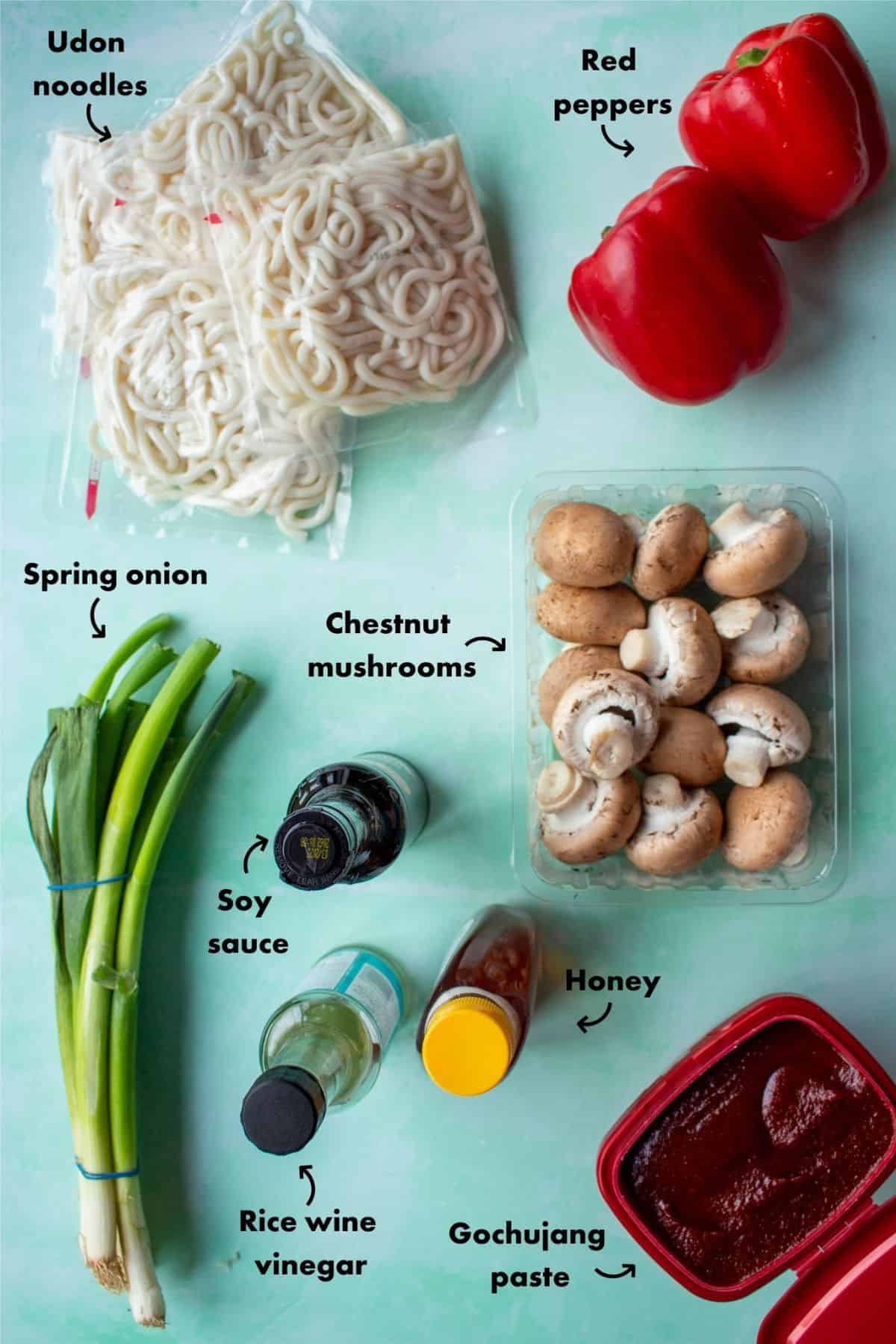
The main ingredients that make this Spicy Korean Gochujang Noodles recipe fantastic are the following:
Gochujang Paste
The star of the show. To add spice, sweetness and a rich flavour to these Korean spicy noodles.
Udon Noodles
I’ve chosen these thick noodles as they stir-fry/cook within a small amount of liquid/sauce really well. As they can cook within the sauce, it means they absorb all the amazing flavours from the Gochujang.
Chestnut Mushrooms, Red peppers and Spring onions
The perfect combination ; Umami packed mushrooms, red peppers for nutrients, sweetness and crunch and spring onions as an aromatic and also as a garnish to add crunch.
See the recipe card for full information on all ingredients and quantities.
Here are some other saucy noodle recipes to try…Chilli Oil Udon Stir Fry, Stir-fry Pork Udon Noodles and Chicken Vermicelli Noodles
Variations and Substitutions
No udon noodles? No problem! Substitute the udon noodles with any noodles you have on hand including spaghetti noodles, rice noodles, or buckwheat noodles!.
Can you add meat to spicy Gojuchang noodles? Absolutely! I love this dish with chicken, with prawns (shrimp), with ground beef, with regular beef, and even with tofu.
Try out different veggies in this spicy noodle dish such as napa cabbage, bok choy, or broccoli.
If you don’t have rice wine vinegar, try using a bit of lemon or lime juice instead.
How to make these Gochujang Noodles
- Start by chopping the peppers, mushrooms and spring onion (Image 1).
- Then allow for the pan to preheat with the rapeseed oil, before adding the spring onion, red pepper and mushrooms. Stir-fry on a high heat for around 5 minutes, constantly stirring. Reduce the heat to medium/low and season the veggies with salt (Image 2).
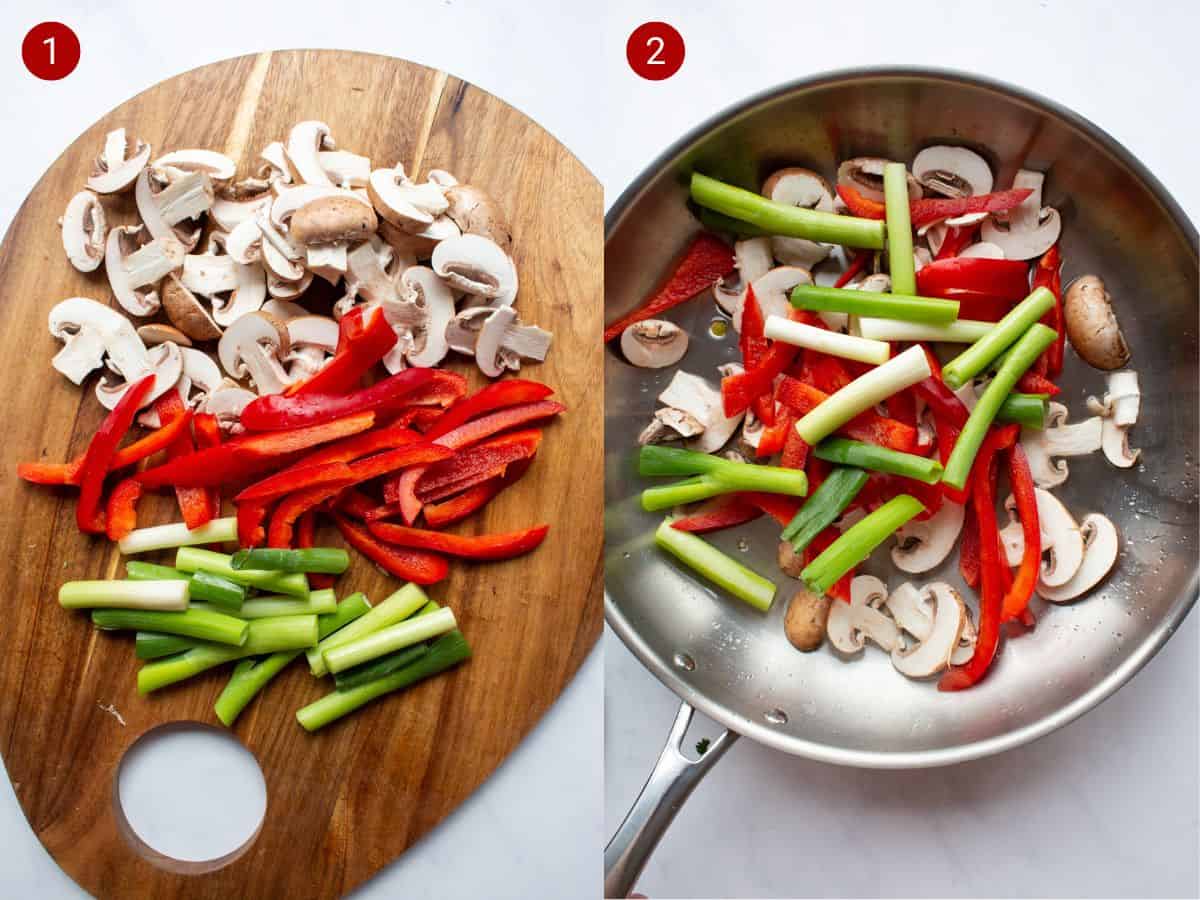
3. Stir-fry on a high heat for around 5 minutes, constantly stirring. Reduce the heat to medium/low and season the veggies with salt (Image 3).
4. Meanwhile, add the Gochujang paste, soy sauce and rice wine vinegar to a bowl (Image 4).
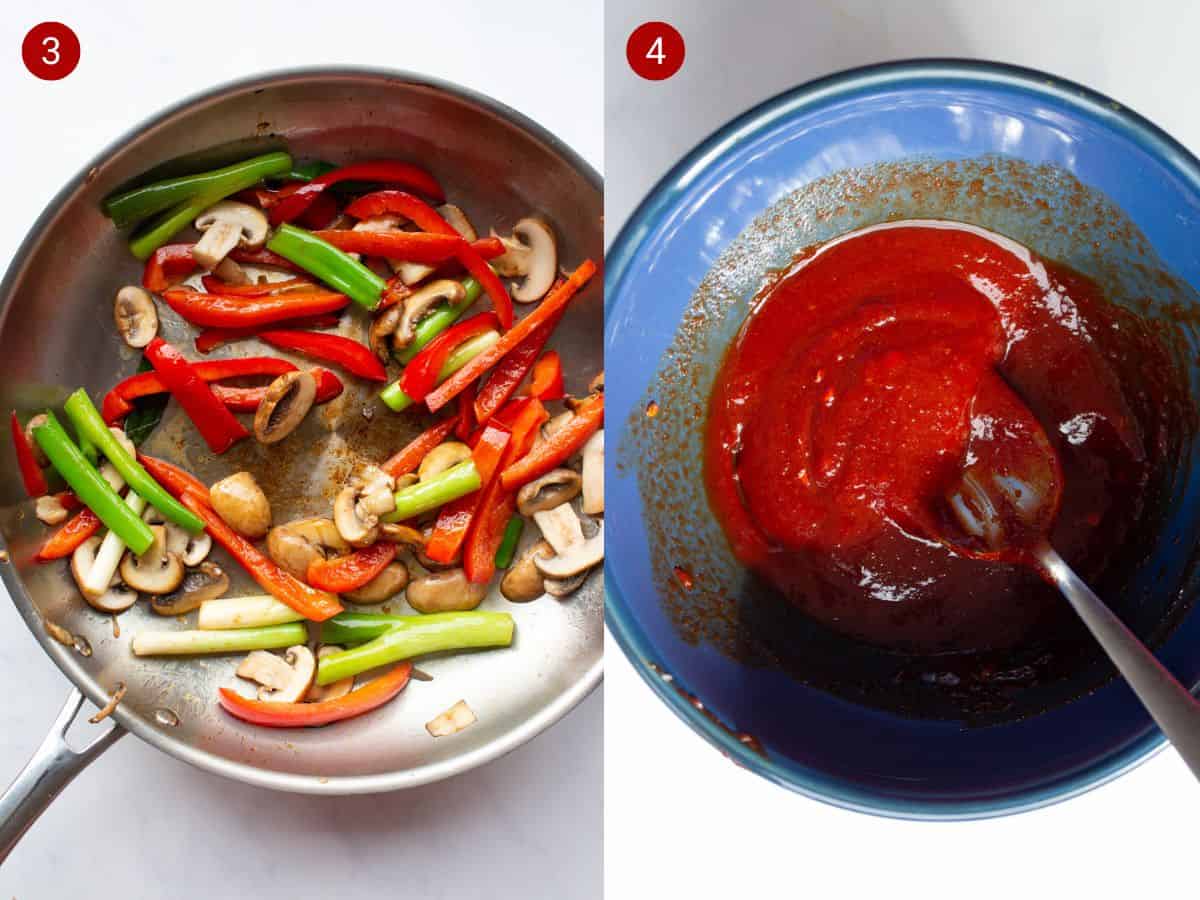
5. Then add the chicken/veggie stock and mix together in the bowl (Image 5).
6. Then add the Gochujang/stock mix and garlic to the pan with the fried peppers, mushrooms and spring onions and stir to combine (Image 6).
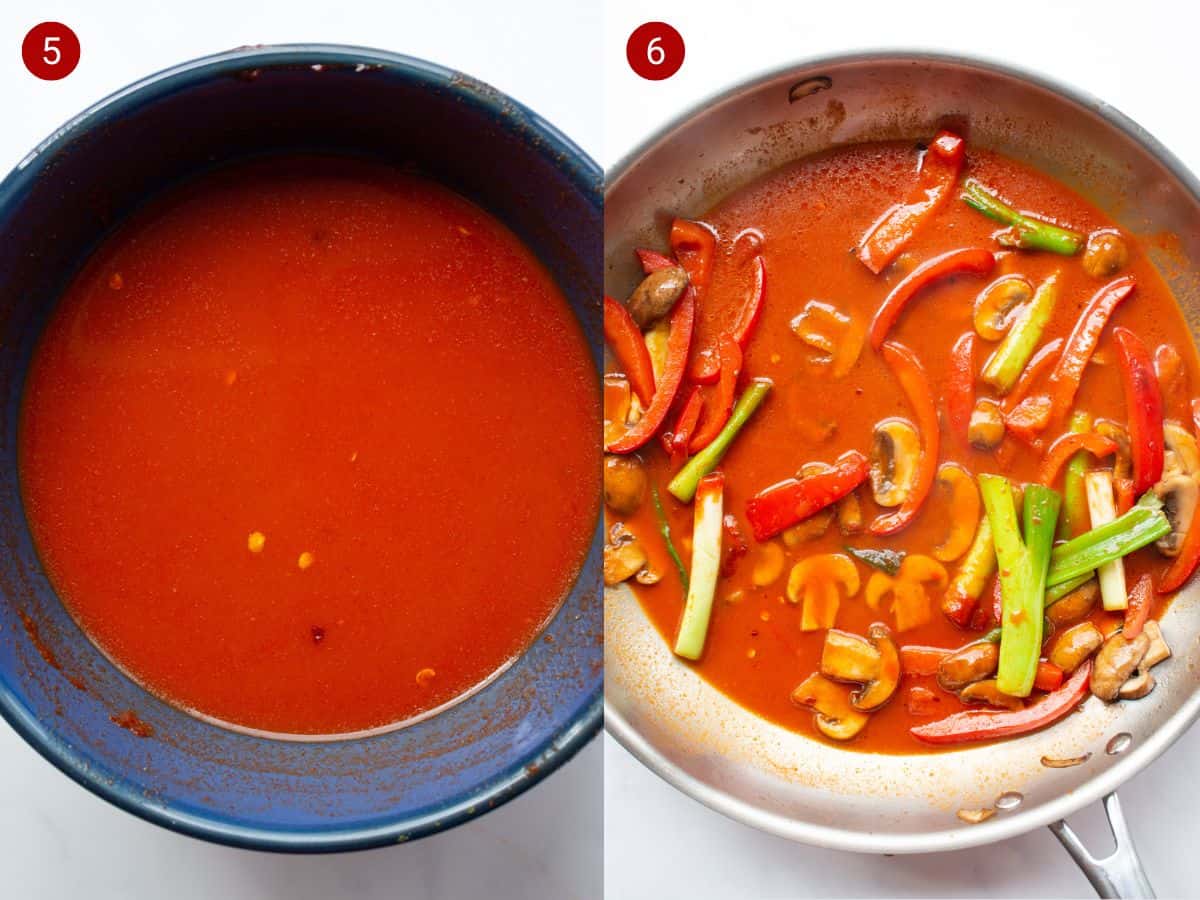
7. Place the udon noodles into the pan. Cover with a lid for 2 minutes as this will allow the noodles to loosen, before you try to move them (Image 7).
8. Remove the lid and stir the noodles into the sauce. Continue to cook for around 3 minutes, until the sauce has thickened/reduced and the noodles are cooked. Top with the reserved thinly sliced spring onion and enjoy! (Image 8).

Tips and Tricks
- Choose noodles that have a chewy texture to complement the Gochujang sauce, for example udon, ramen, or even spaghetti.
- Cook the noodles until al dente: Follow the instructions on the noodle package and cook the noodles until they are just slightly undercooked. This will prevent them from becoming too soft when mixed with the sauce.
- Add lots of vegetables to enhance the dish flavours, such as bell peppers, mushrooms, cabbage, spring onions, pak choi and aubergine.
Here are some other vegetarian recipes to try; Vegetable Paella, Miso Aubergines with Edamame Beans and Brown rice and Tortellini Pasta Salad
Make Ahead Instructions
This recipe is great for making ahead of time/meal prepping. Like many saucy foods, the Gochujang noodles flavour intensifies over time, so you don’t need to worry about any flavour loss.
What can happen though is the noodles can dry out slightly, so to reheat, add a couple of tbsp of water into a pan for each portion. Cook on a medium heat for around 2 minutes, adding another tbsp of water as necessary. Top with freshly sliced spring onions and enjoy.
Serving Suggestions
I recommend adding a bit of protein such as chicken, shrimp, or tofu to make this a complete meal. You could also serve it alongside a bit of bread if you feel the spice level is too high.
Leftover Storage and Reheat Instructions
Refrigerator: Any leftovers will keep in the refrigerator for up to 5 days.
Freezer: This dish freezes very well, which makes it perfect to make ahead for work day lunches or even quicker than 10 minute dinners. Freeze for up to 3 months in a regular freezer and up to 1 year in a deep freezer.
Reheat: To reheat, just pop this dish in the microwave and heat in 10-15 minute bursts until heated through.
Recipe FAQs
I’d say the spice level is on the upper end of mild, but it all depends on how much you use. With my Gochujang noodles recipe, I use quite a lot, as I want the saucy noodles to be rich, spicy and vibrantly red. If you’re worried about the heat, use half the amount of Gochujang paste and slowly add it to the noodles, until you get your preferred spice level.
While udon noodles are traditional, you can actually use any type of noodle you like including gluten free noodles.
This is a great dish to make ahead of time. It lasts 5 days in the refrigerator and up to 3 months in the freezer. You can see more instructions in the “Make Ahead” section above.
Add pasta water and simmer on low to thicken the sauce.
Add a bit of water (not pasta water) to loosen up the sauce if you feel it is too thick.
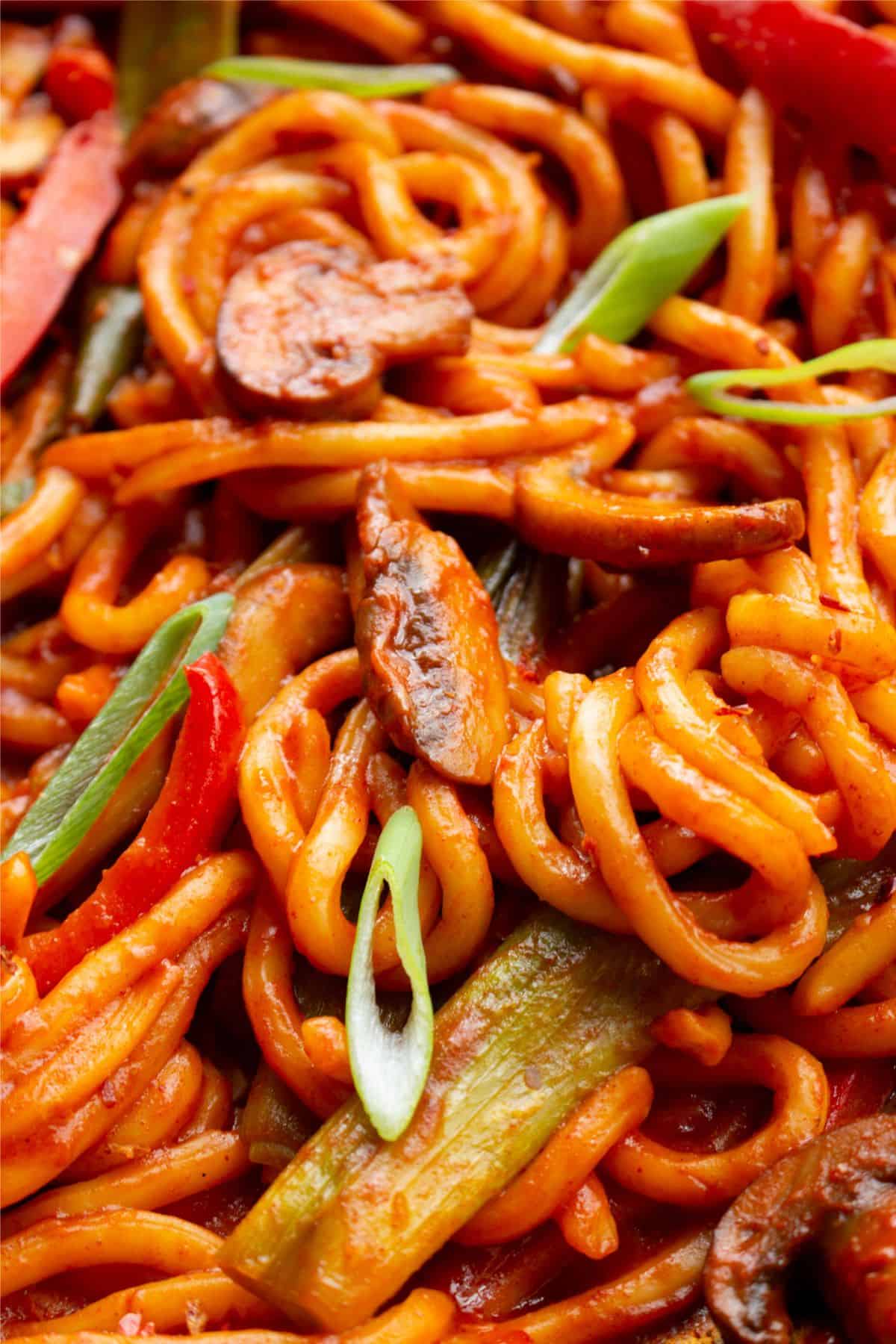
If you tried this Gochujang Noodles recipe, it would be mean so much to me if you could leave a review & a star rating to let me know how you found it! I love hearing about your experiences – it motivates me to keep creating more and more recipes for you guys 💛 Let’s get cooking! – Mimi x
Gochujang Noodles (Spicy Korean Noodles)
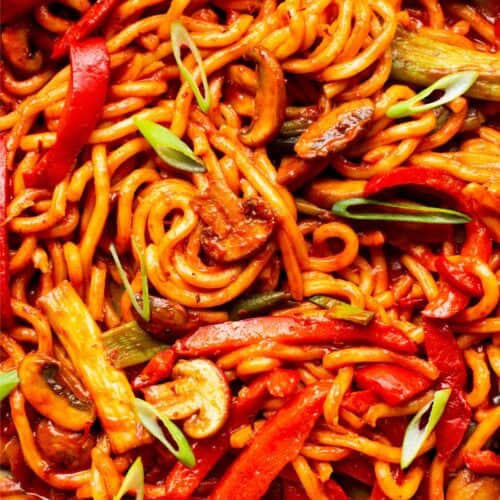
Ingredients
- 50 g spring onion, sliced into thirds, some reserved for garnish (£0.40)
- 1 red pepper, thinly sliced (£0.50)
- 250 g chestnut mushrooms, thinly sliced (£0.95)
- 4 tbsp Gochujang paste (£2.79/10)=(£0.28)
- 600 g (1 ½ packs) Japanese Style Noodles (£0.95x2 =(£1.80)
- 3 cloves garlic, minced (£0.75/3)=(£0.25)
Cupboard Essentials
- 2 tbsp soy sauce
- 1 tbsp rice wine vinegar
- 1.5 tbsp rapeseed oil
- 150 ml chicken stock/veggie stock
Method
- Start by adding the rapeseed oil to a large, deep frying pan over high heat. Allow the pan to preheat, then add the spring onion, red pepper, and mushrooms.
- Stir-fry on high heat for around 5 minutes, constantly stirring.
- Meanwhile, combine the gochujang paste, soy sauce, honey, rice wine vinegar, and chicken or veggie stock in a bowl.
- Reduce the heat to medium/low, and season the vegetables with salt. Add the gochujang mixture and garlic into the pan, stirring to combine.
- Add the udon noodles to the pan and cover with a lid for 2 minutes. This will help loosen the noodles before stirring them into the sauce.
- Remove the lid and stir the noodles into the sauce. Continue to cook for around 3 minutes, until the sauce has thickened/reduced and the noodles are cooked.
- Top with the reserved thinly sliced spring onions and enjoy!
Notes
- Choose chewy-textured noodles like udon, ramen, or spaghetti to pair with Gochujang sauce.
- Cook the noodles until al dente to maintain a firm texture when combined with the sauce.
- Enhance the dish by adding different vegetables such as bell peppers, mushrooms, cabbage, spring onions, pak choi, and aubergine.
Nutrition
Leave a comment and a rating!

- Weekly meal plans with a £20 budget
- 150+ exclusive recipes
- Personal dashboard
- Exclusive step by step videos
- Shopping list tools
- Advert Free experience

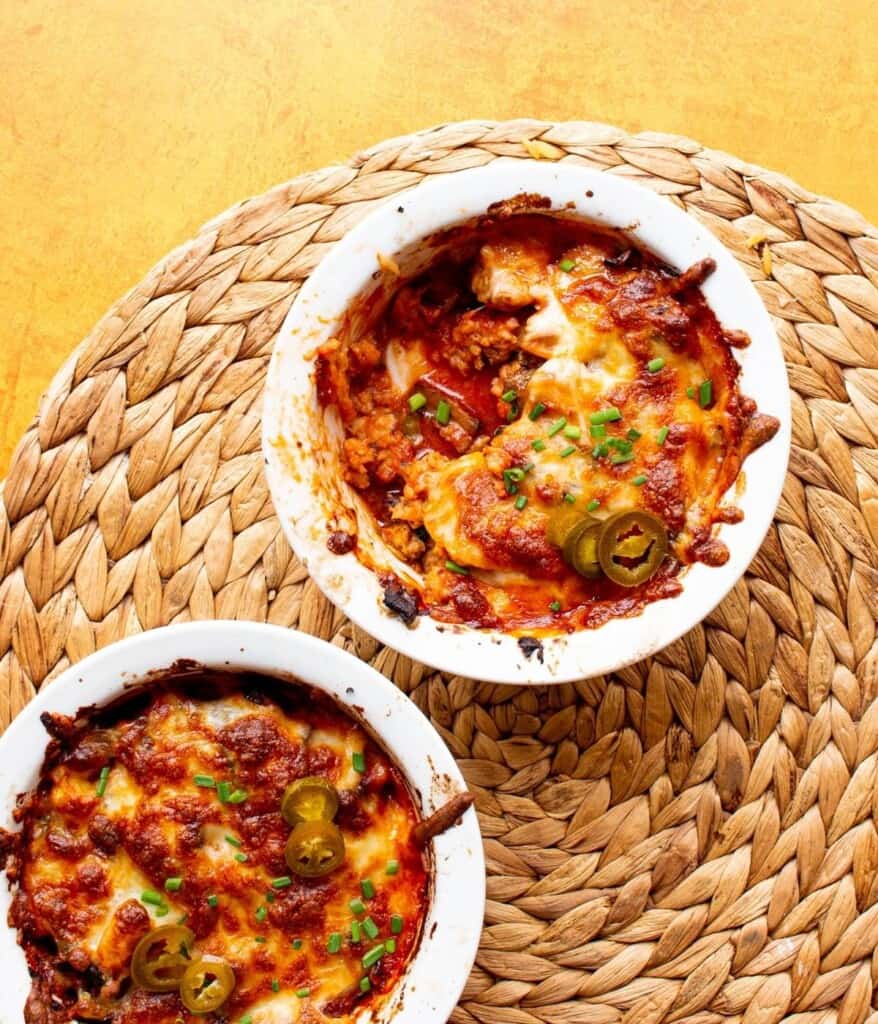
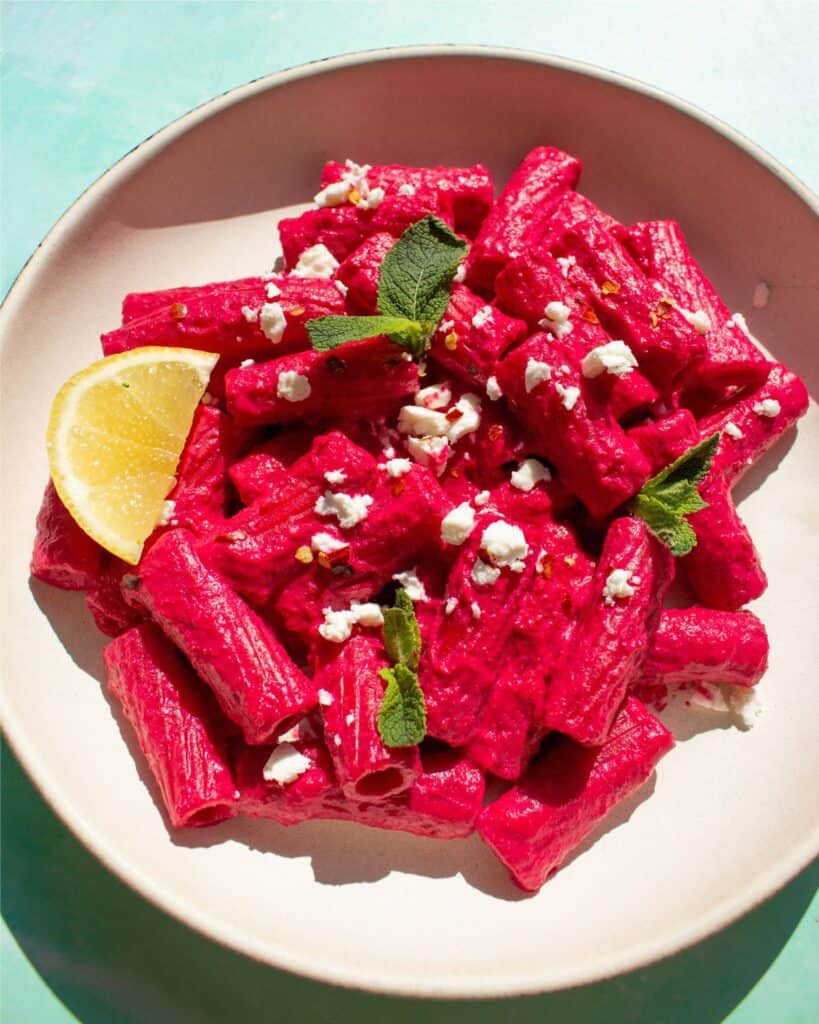
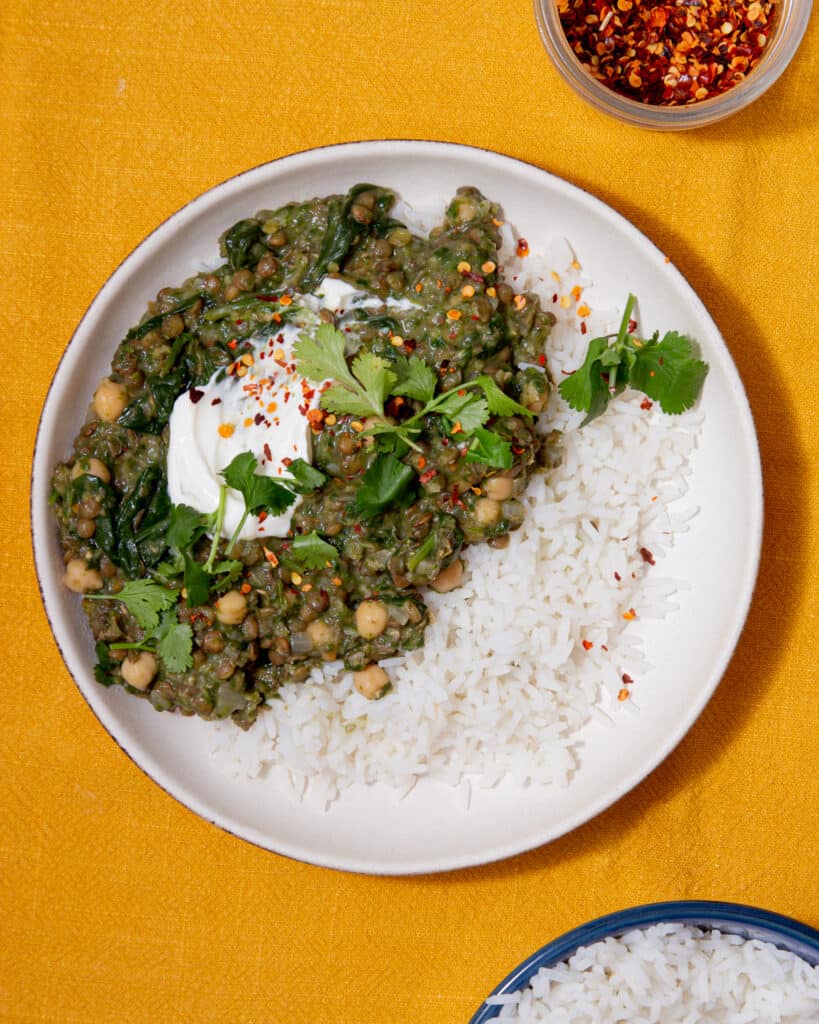




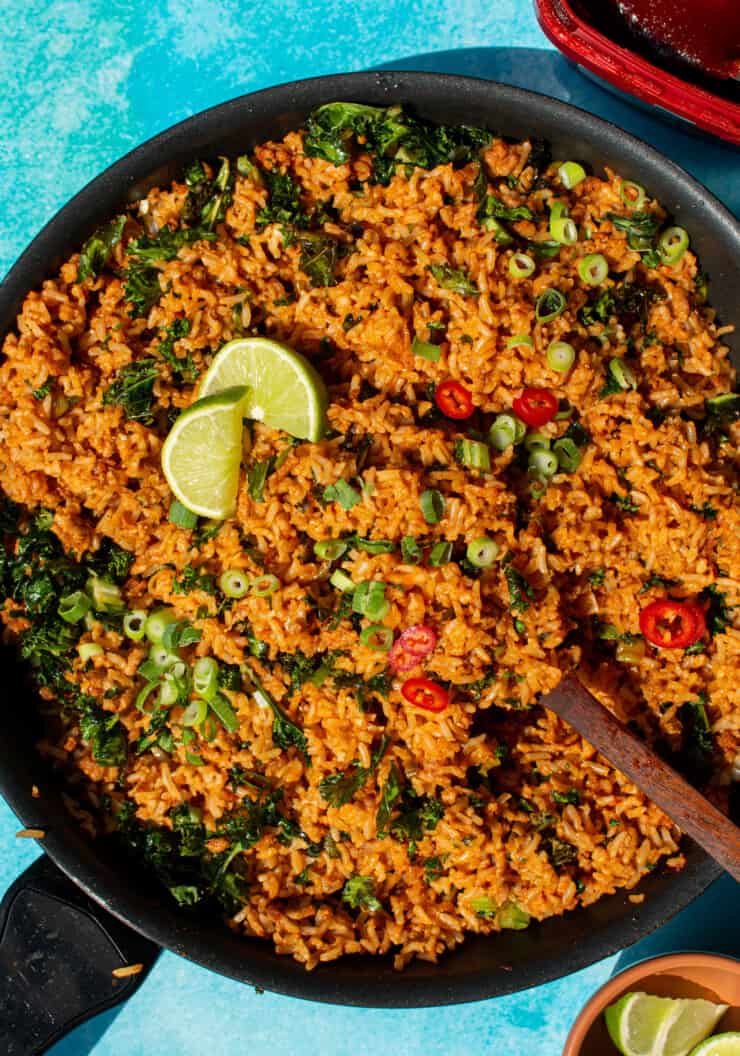
Comments